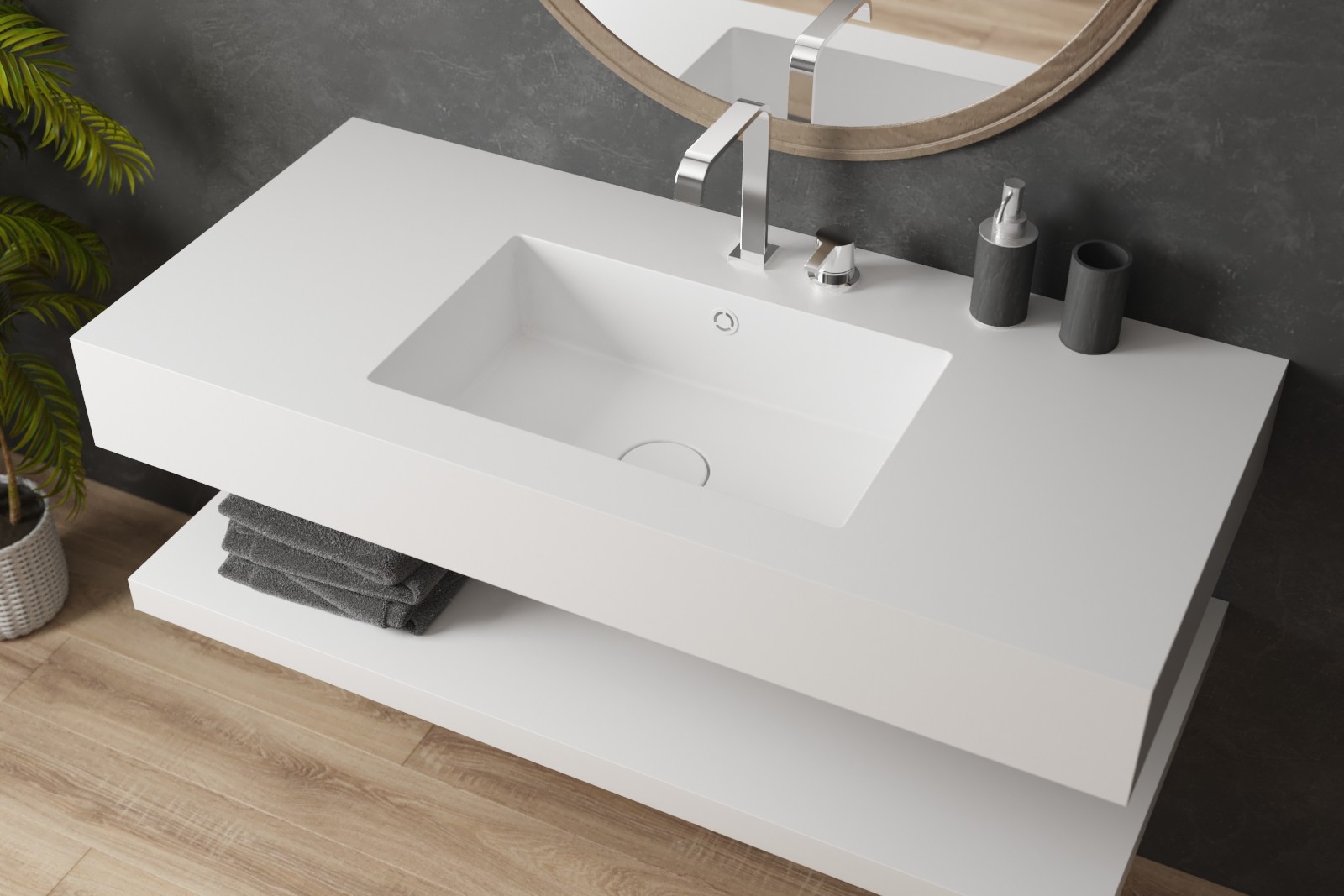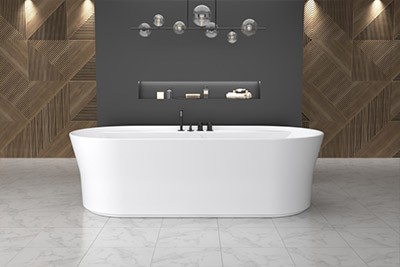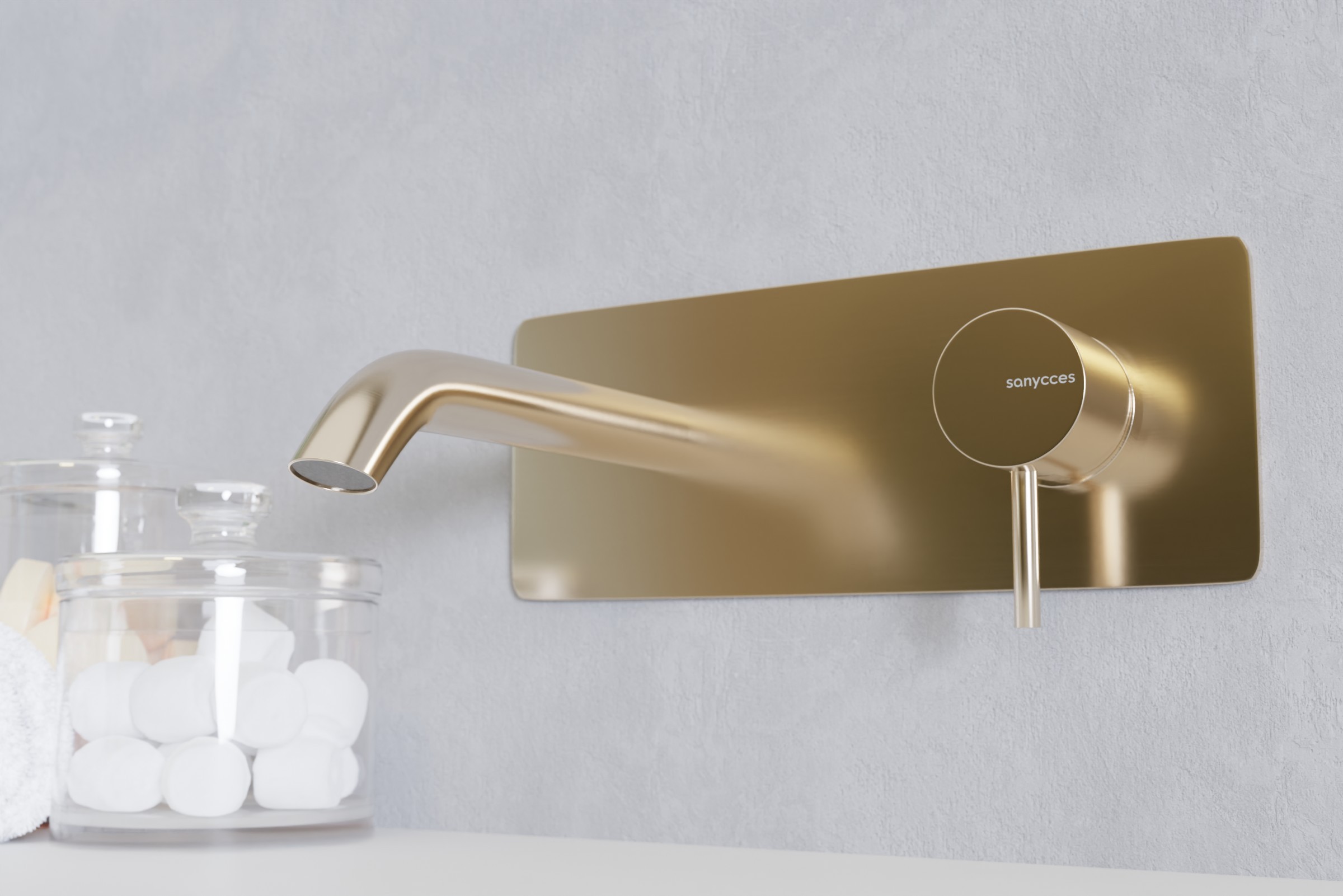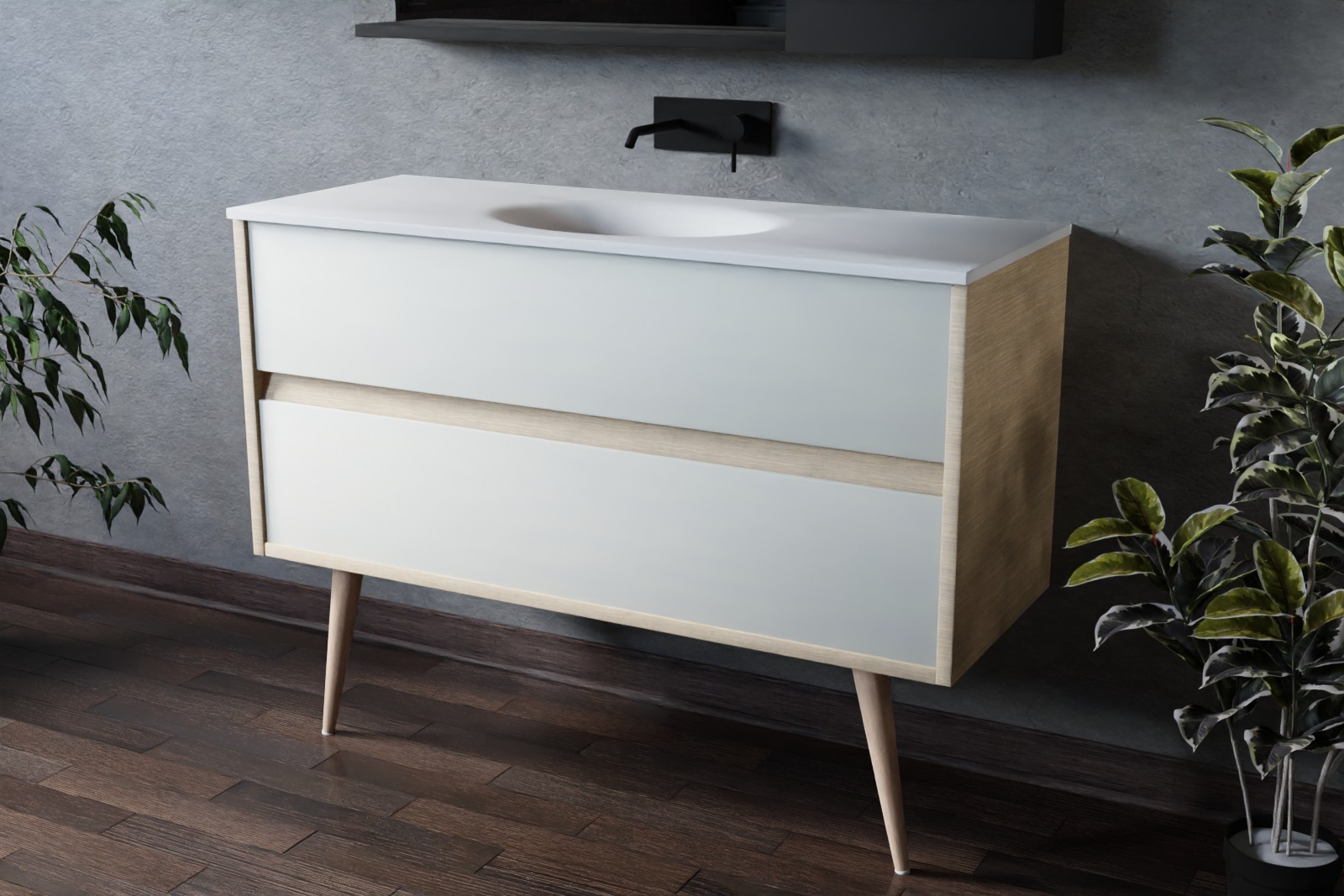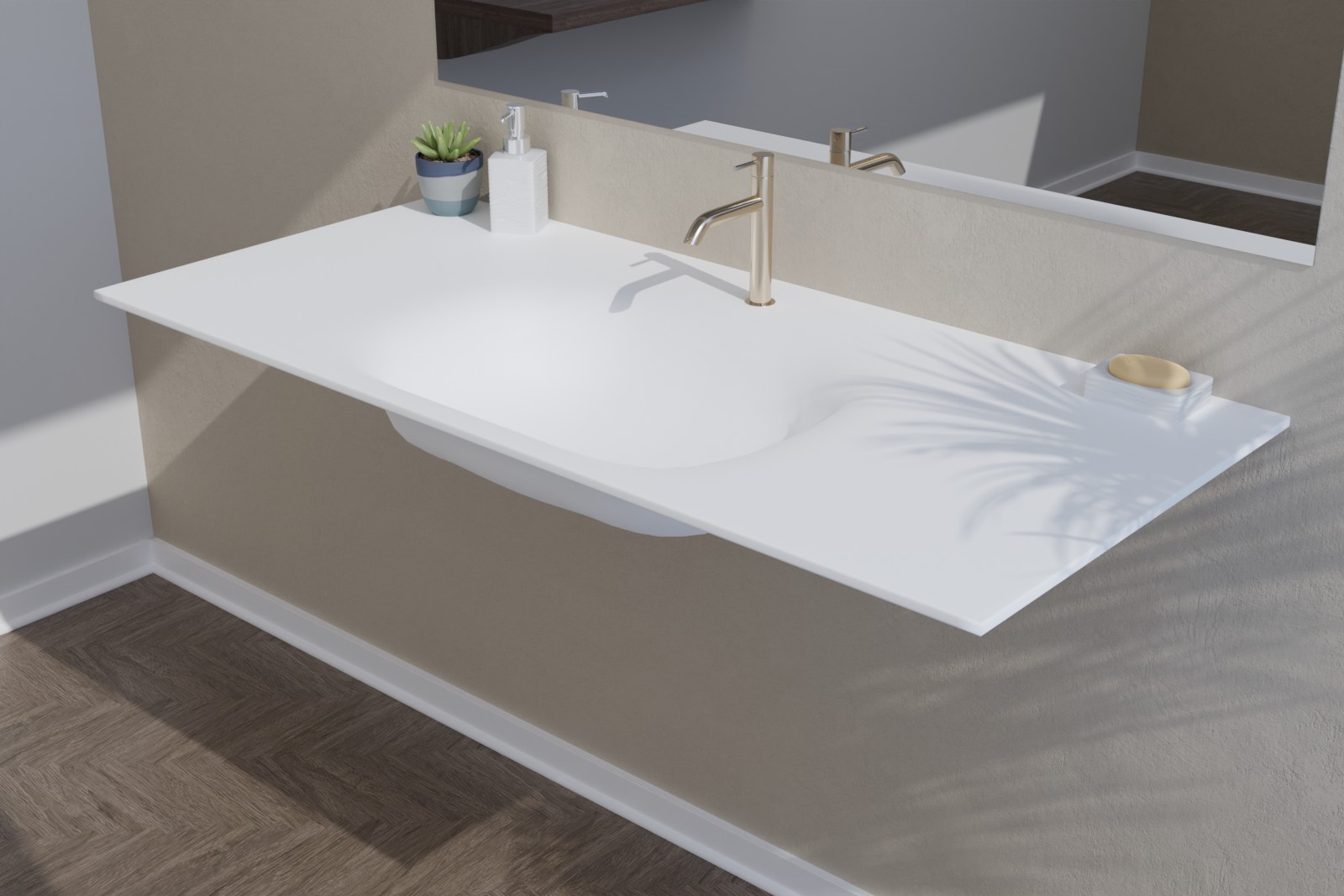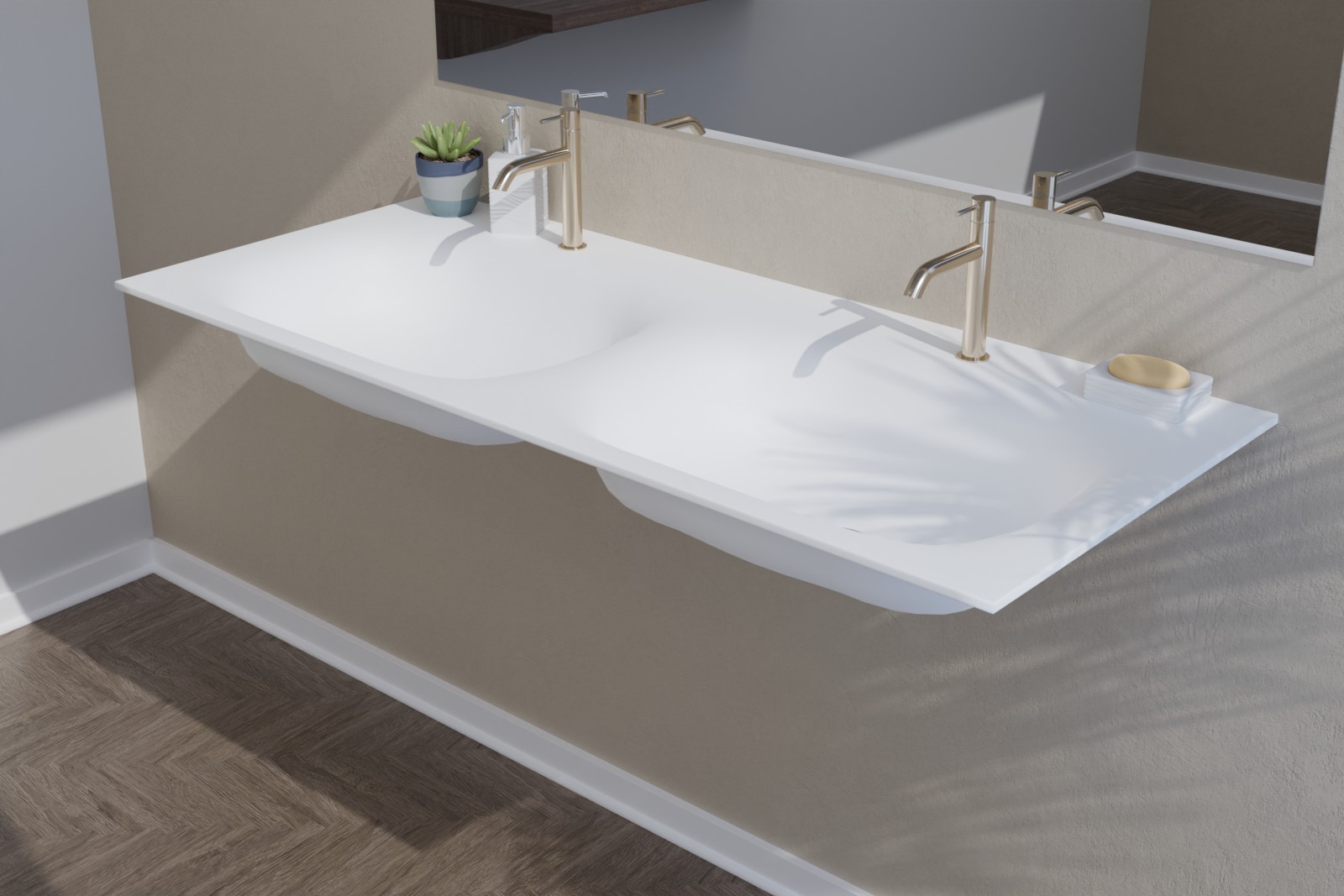Did you know that in France 12 million people are affected by a disability and nearly one million have reduced mobility. Thanks to these figures, we understand that it is necessary to adapt or even renovate the spaces that are essential to life in a home. The kitchen, the living room, the bedroom and especially the bathroom, which can quickly become unusable or even dangerous if it is not adapted to a person with reduced mobility. We are therefore going to present you with the rules and tricks to know how to design a space that respects all the PRM standards.

What do I need to consider when designing a bathroom to PRM standards?
To fit out a bathroom to PRM (People with Reduced Mobility) standards, the steps to follow are as follows:
- Provide an area for turning of at least one and a half metres (1.5m) between the different elements of the bathroom, called the manoeuvring space.
- For the entrance door, you will need a useful passage of 77cm in order to leave enough room for a wheelchair to pass.
- The washbasin top: you must choose a hanging washbasin top with a maximum thickness of 130 mm to allow wheelchair users to access it. If you wish to install a vanity unit, you will need a free space of 60 cm wide and 30 cm deep.
- The shower: there are two possibilities: the Italian shower or the extra-flat shower tray so that there are no steps to access it. The law states that access must not be made with a step of more than 2cm or 4cm if a ramp is present with a slope of less than 33%. In both cases, non-slip surfaces should be used. Solid surface shower trays are ideal as they are generally offered with this type of covering. For the technical part, the PRM shower must have a minimum dimension of 1.20m x 0.90m with a height of 1.80m or more. It must contain a specific seat at a height of 45cm to 50cm.
- Accessories: it is sometimes necessary to install support bars, shelves in the shower or any other accessory that facilitates the toilet of the disabled person.
- Raised toilets: if the toilet is located in the bathroom, its installation must take into account a space large enough for a wheelchair to manoeuvre around it without any problem in order to comply with PRM standards.
- Controls in the bathroom such as switches, taps, door or even window handles should be between 90 and 130cm high.

Which basin to choose for a PRM bathroom?
The washbasin is an essential element in the bathroom, so it is very important that it meets the PRM accessibility standards. The basin must have a free space of at least 70cm underneath the top in order to leave room for the legs if the person is in a wheelchair. Then, as mentioned before, the maximum thickness of the basin must be 13cm. A washbasin with one or two built-in or thermoformed basins is preferable. The height should be between 90 and 130cm from the floor.
Which furniture to choose for a PRM bathroom?
Furniture is an important part, especially if the space is relatively limited; it can quickly become cumbersome and can interfere with the independence of people with reduced mobility. It is therefore necessary to think about accessibility and to ensure that it is free of any risk. To avoid complicating the task, opt for PRM furniture that is of course designed and adapted for people with disabilities. They will generally improve accessibility, for example with a clearance at the bottom to facilitate the passage of lower limbs or be painted in a bright colour so that they can be seen by visually impaired people.
Shower or bath for a PRM bathroom?
It is important that your shower is on one level, so that there are no steps to access it. It is possible to create a ramp with a slope of less than 33% but this is not recommended.
Then for access to the shower for a person in a wheelchair, a grab bar and a non-slip seat should be installed so that they can sit in the shower. We recommend that you opt for seats that can be folded up against the wall so as not to disturb a person who does not need them.
However, if you want a bathtub, it is also easy to install devices to simplify access. There are also bathtubs designed to PRM standards with doors on the side with a suitable chair for intimate hygiene.
As you can see, there are many solutions to simplify the life of a person with a disability, so you need to choose what you want within the budget you have and the space you have.


